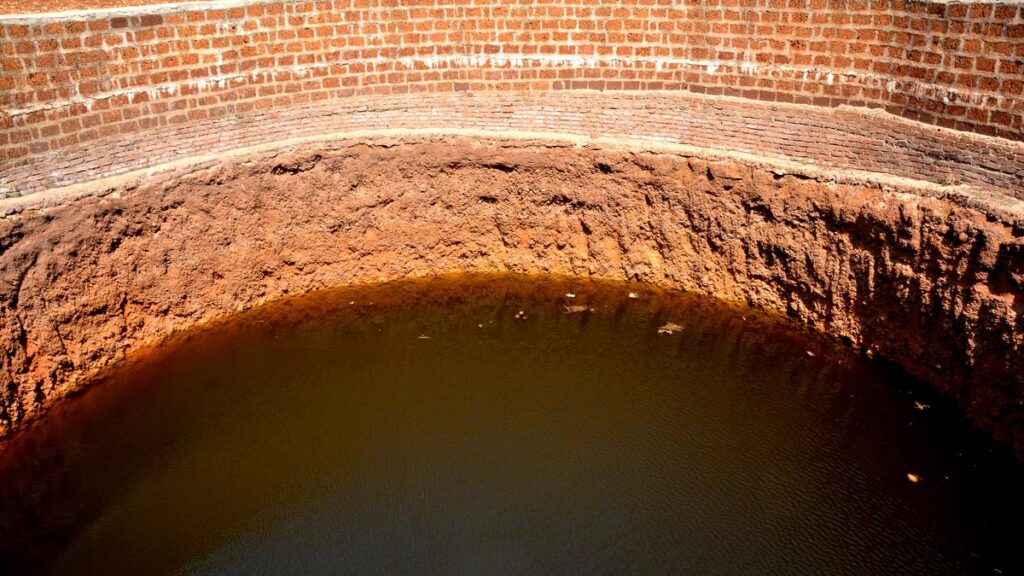
A well at a farmer’s field near Humnabad Industrial Area filled with chemically contaminated groundwater.
| Photo Credit: KUMAR BURADIKATTI
The Environment Ministry has notified new rules under the Environment Protection Act that lays out a process to address sites that are chemically contaminated. Called the Environment Protection (Management of Contaminated Sites) Rules, 2025, these give a legal structure to the process of contamination, that until now was missing despite several sites being already identified across the country for decades.
Contaminated sites, according to the Central Pollution Control Board, are those where hazardous and other wastes were dumped historically. This has most likely resulted in contamination of soil, groundwater and surface water that pose a risk to human health and the environment. Some of the sites were contaminated when there was no regulation on management of hazardous wastes.
In some instances, polluters, responsible for contamination, have either shut their operations or the cost of remediation is beyond their capacity, thus the sites remain a threat to the environment. These sites may include landfills, dumps, waste storage and treatment sites, spill sites, and chemical waste handling and storage sites.
There are 103 such sites across the country. Only in seven sites remedial operation has commenced, which involves cleaning the contaminated soil, groundwater, surface water and sediments by adopting appropriate technologies.
A senior official in the Environment Ministry told The Hindu that the latest rules — made public on July 25 — were part of a process of “legally codifying” the process in place once contaminated sites were identified. Under these rules, the district administration would prepare half-yearly reports on “suspected contaminated sites”.
A State Board, or a reference organisation, would examine these sites and provide a ‘preliminary assessment’ within 90 days of being thus informed. Following these, it would have another three months to make a detailed survey and finalise if these sites were indeed ‘contaminated’. This would involve establishing the levels of suspected hazardous chemicals – there are currently 189 marked ones under the provisions of the Hazardous and Other Wastes (Management and Transboundary Movement) Rules 2016 – and if these exceeded safe levels, the location of these sites would be publicised and restrictions placed on accessing it.
A ‘reference organisation’ — basically a body of experts — would be tasked with specifying a remediation plan. The State Board would also have 90 days to identify the person(s) responsible for the contamination. Those deemed responsible would have to pay for the cost of remediation of the site, else the Centre and the State — under a prescribed arrangement — would arrange for the costs of clean-up.
“Any criminal liability, if it is proved that such contamination caused loss of life or damage would be under the provisions of the Bharatiya Nyaya Sanhita (2023),” the official told The Hindu.
However, contamination resulting from radioactive waste, mining operations, pollution of the sea by oil, solid waste from dump sites would not be dealt with under the provisions of these laws as they are governed by separate legislation.
Published – July 28, 2025 09:43 pm IST

